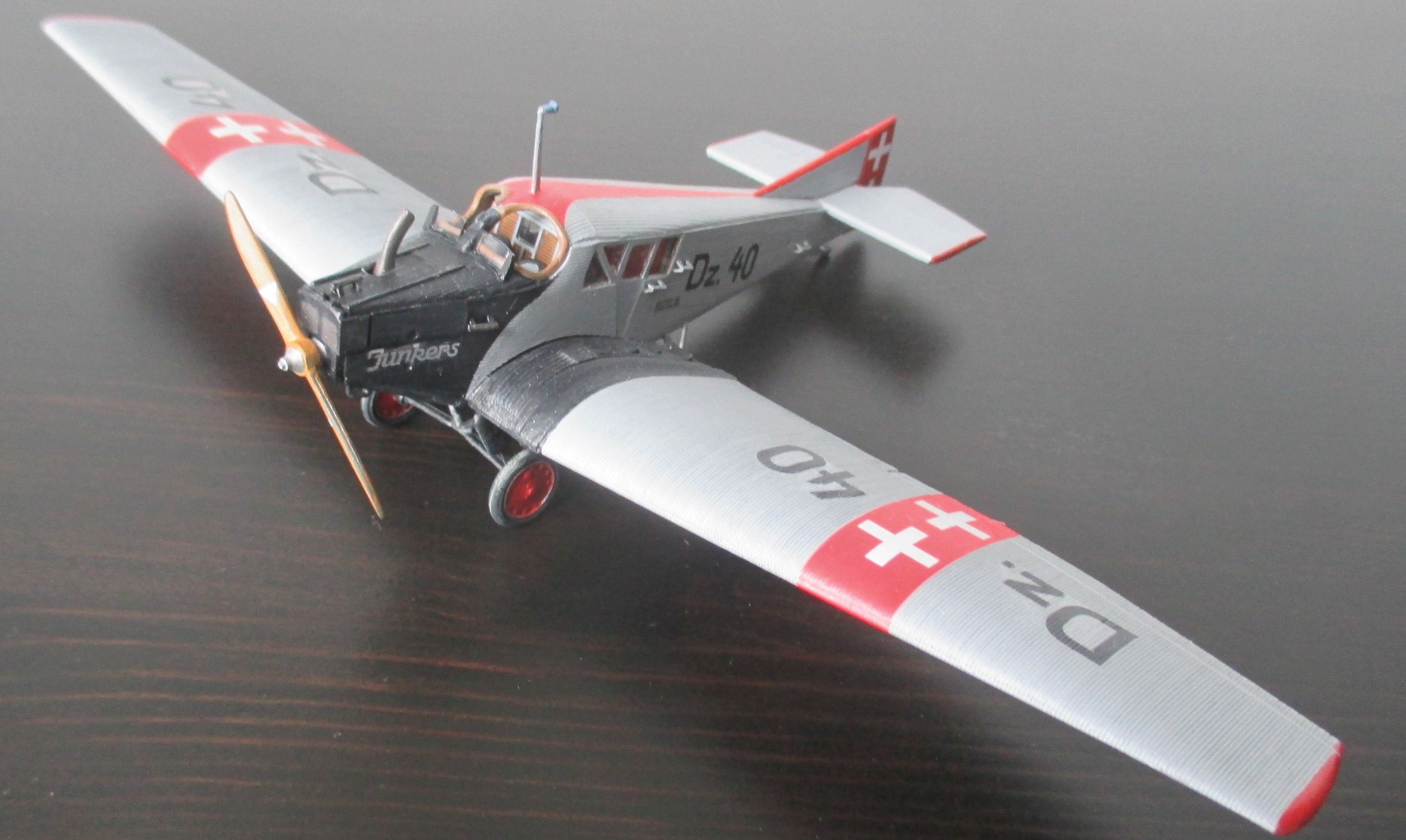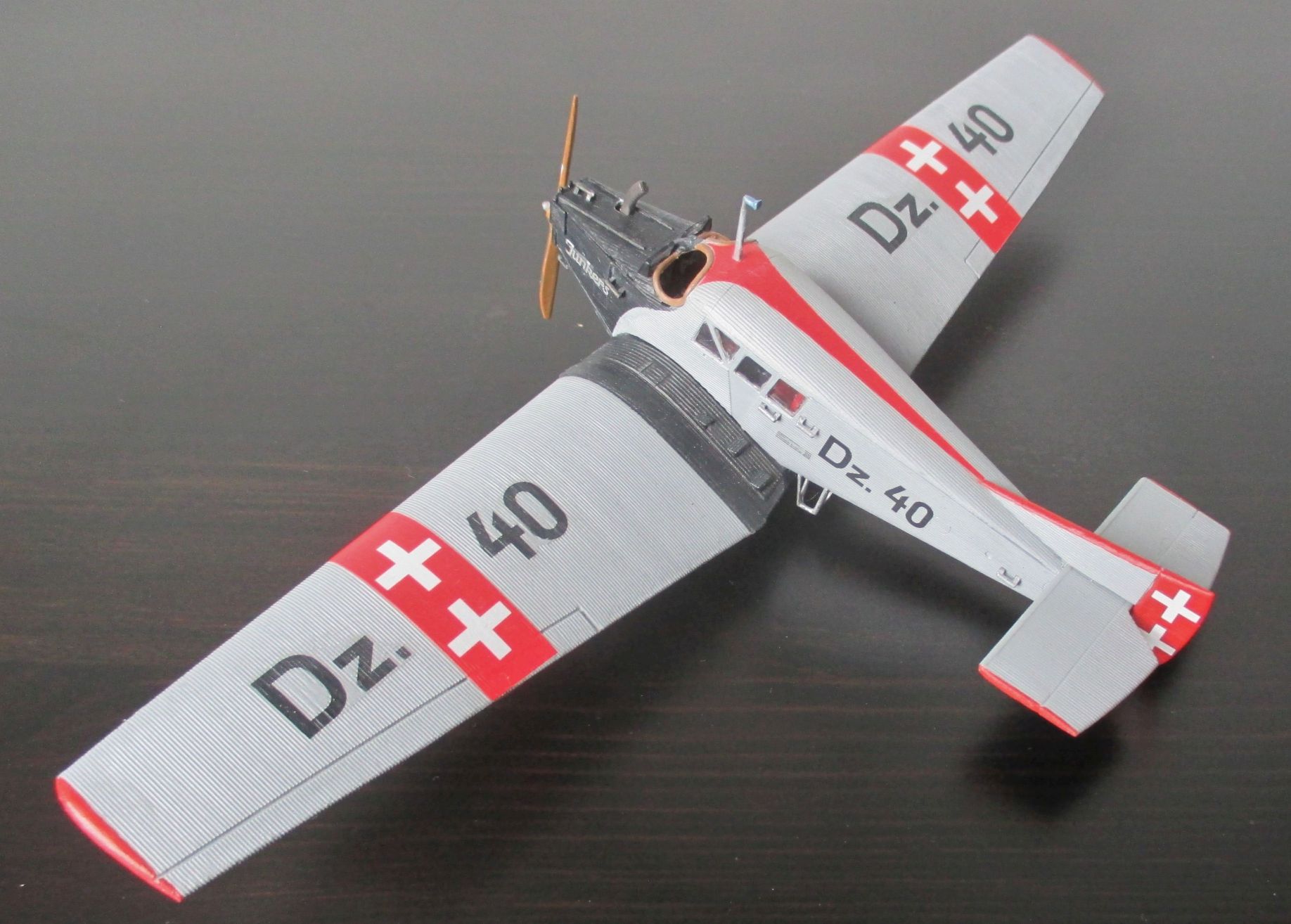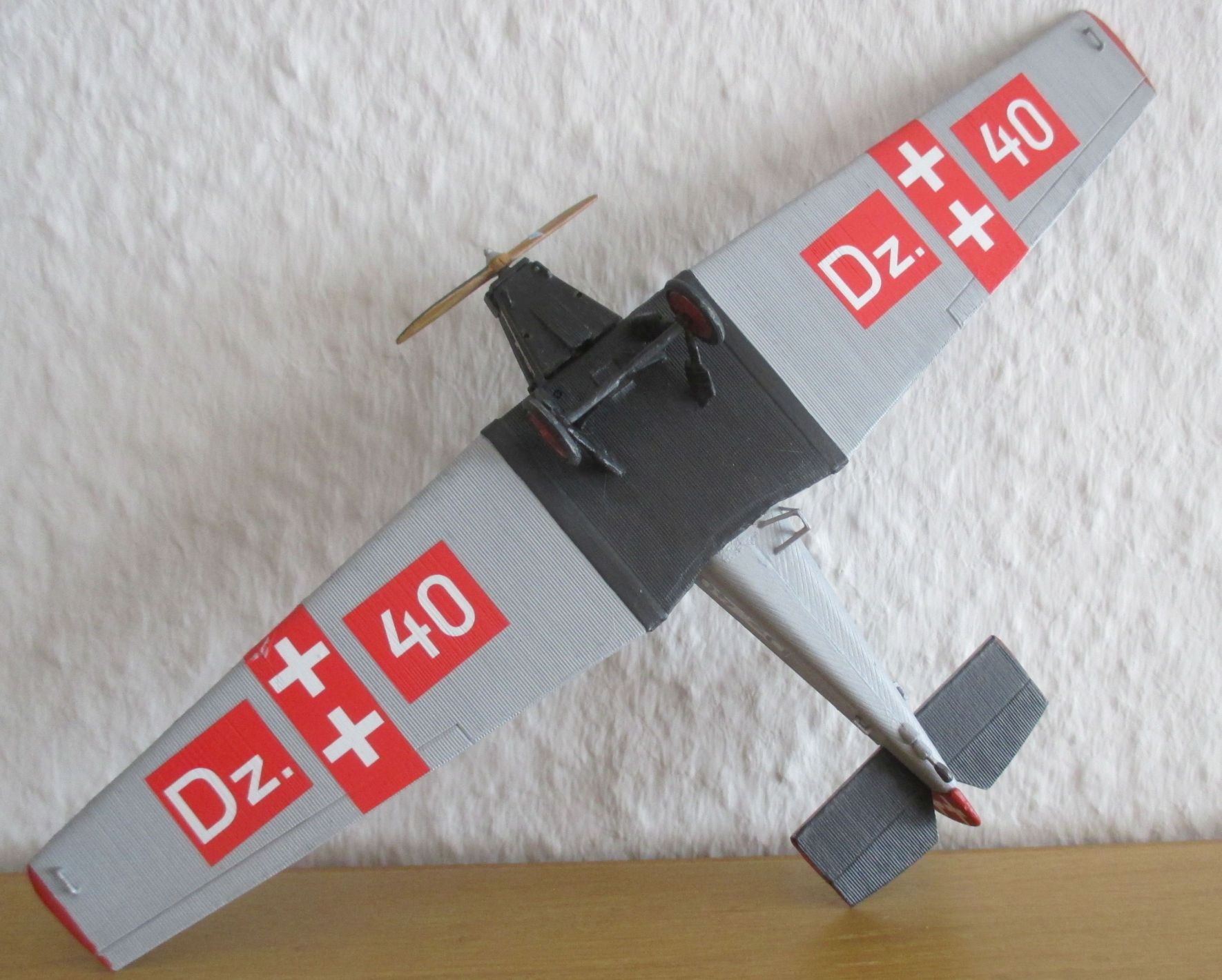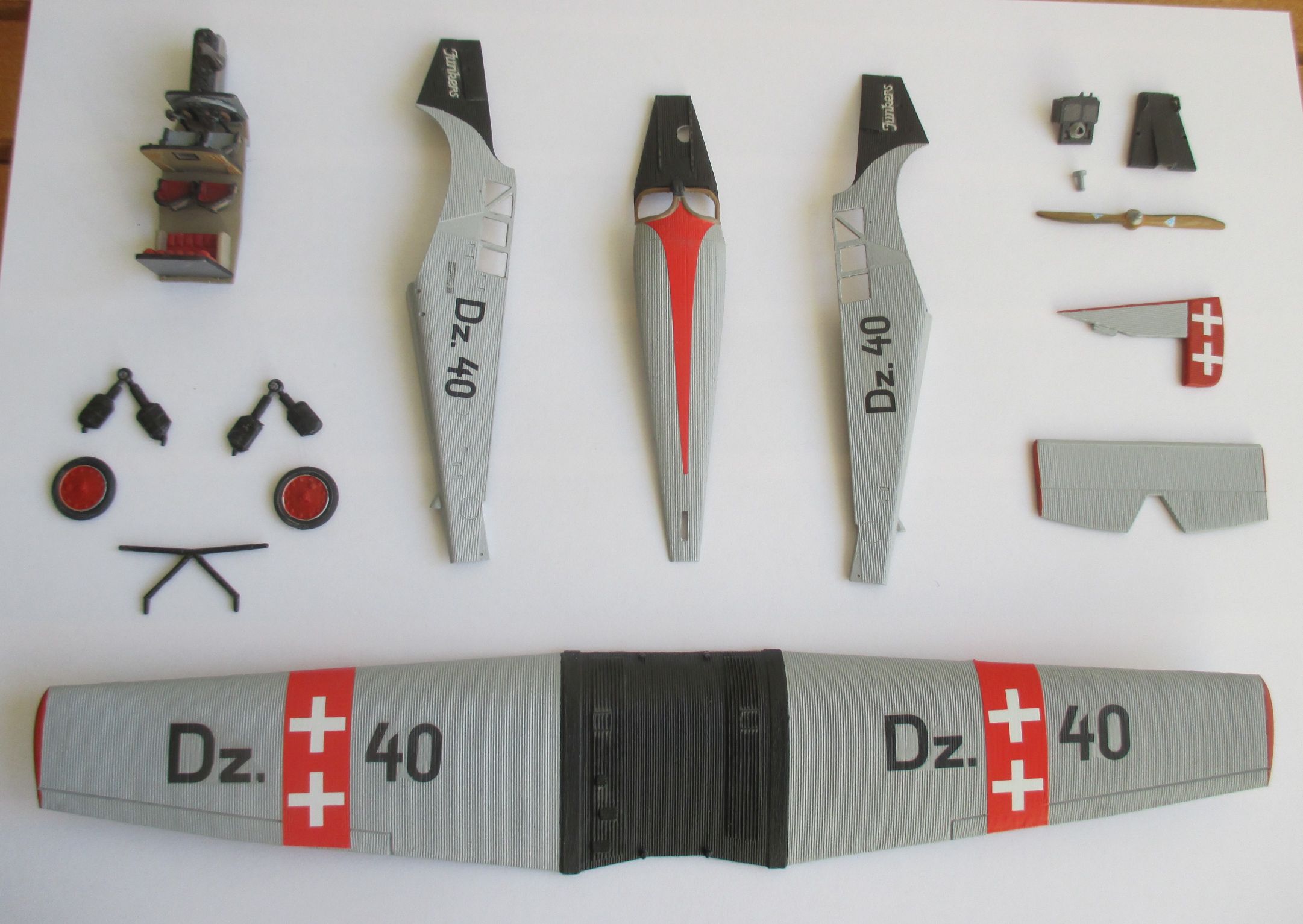Model of the month May 2021 The Junkers F 13
Boarding, please – The Junkers F 13
From original to model
An independent part of the collections of the Aviation Museum Hannover-Laatzen are round about 1,000 scale models, mainly of the international standards 1/72 and 1/48.
Such true-to-the-original miniatures give observers of the history of technology in museums an "overview", not only of the individual exhibit (sometimes even as the only possibility of a three-dimensional display if there is no surviving original), but also of the lines of development of aircraft construction through the arrangement and comparison of the exhibits. Sometimes they even close gaps in the presentation of the originals. The quality of their craftsmanship alone is a pleasure to behold.
This month we want to take a closer look at the world's first commercial aircraft, the Junkers F 13. It is staged as a faithful replica in Hangar 1, alongside with this the museum presents several scale models of this type in its exhibition. Here´s a closer look on one of them.
Our model: Junkers F 13 (Revell, 1/72)
From Revell GmbH in Westphalia comes this plastic kit, reissued in 2020 and a kit as beautiful as it is sophisticated with some 75 parts and a picture set for two versions in 1/72 scale.
In the model display cases opposite the 1:1 replica of the type, various versions of the F 13 are to be found. Shown here is an aircraft of the Danzig Airmail in 1923.
The Free State of Danzig, created by decree by the victorious powers of the First World War and detached from the German state, balanced politically and economically between Poland, the League of Nations as "guarantor power" and Germany. However, the arbitrary and painful separation also offered opportunities - especially for aircraft construction and exports, which were de facto prohibited in Germany, and for air traffic. Thus, the Danzig airport developed into a traffic hub between Scandinavia, the Baltic States, Poland and the West - and into a "sales salon" for German aircraft manufacturers, primarily Junkers. The various Danzig aviation companies, such as Lloyd Ostflug and Danziger Luftpost, were closely linked to the Dessau company.
The original:The world's first commercial aircraft
Prof. Hugo Junkers, inventor, designer and entrepreneur, is also one of the great figures in aviation history. The owner of a large number of patents, he built the world's first all-metal aircraft in 1915, and in 1919 the first commercial aircraft, the Junkers F 13, which became groundbreaking for the entire civil aviation industry. Like many of Junkers' designs, the type achieved various world records, and for nearly a decade it was the most widely used passenger and mail aircraft in the world. This was despite massive restrictions and impediments imposed by the World War winning powers and their 'Allied Control Commission' on the production and operation of aircraft in Germany. The design idea of this low-wing aircraft with duralumin ("corrugated sheet") planking led to the G 23/24 and W 33, and culminated in the Ju 52/3m, the world-famous 'Tante Ju' or "Iron Annie". Incidentally, original parts and various models of this aircraft can also be seen in the museum.
High-tech as civilizing mission
The F 13, which was built a total of around 320 times in various motorizations and versions, also stands for the aeronautical exploration of the earth as a "cultural and civilizing mission that unites nations," as Hugo Junkers put it.
When it first flew in June 1919, it was a marvel of engineering - with an enclosed, heatable cabin for four passengers at the safest point on the aircraft: on the thick wing. Full-length windows on both sides of the cabin provided excellent visibility, and entry and exit were via secured steps on the fuselage and wing as well as doors. The two pilots sat between the cabin and the engine in a cockpit with dual controls that was only half enclosed. The landing gear was spring-mounted, and the wing and tailplane were optimized for stable flight attitude. The entire design adhered to the requirement for the highest possible safety and comfort as well as reliability in operation. And in doing so, embodied a timeless technical aesthetic.
Exploration and development of air routes on almost all continents are associated with the F 13. It flew in the colours of most aviation nations and formed the backbone of the Deutsche Luft Hansa aircraft fleet for a time. And as a true classic of aviation history it can of course be experienced in the Aviation Museum Hannover-Laatzen - in original size and as a model!
Data sheet:
Length, height, wingspan: 9.60; 4.10; 17.75 m
Weight: 1,170 (empty); 2,000 (total) kg
Crew + passengers: 2 + 4
Engine: 1 BMW IIIa or Junkers L5 6 cyl/inline with about 250 hp
Speed/ max. range: 160 km/h/ 950 km
Could we make you curious? Then we would be pleased about your visit in the Ulmer Straße opposite to the hanoverian fairground (as soon as the museum is allowed to open its doors again: please inform yourself on these pages)
sb
Bildunterschrift (F13_1): “Die Junkers F 13 schuf im Jahr 1919 die Kategorie Verkehrsflugzeug.“
Bildunterschrift (F13_2): “In den Farben des Freistaates Danzig. Die Junkers F 13 von Revell in 1/72.“
Bildunterschrift (F13_3): “Der werksseitig schwarze Teilanstrich der Maschinen war den stark ölenden Motoren geschuldet.“
Bildunterschrift (F13_4): “Diese Aufnahme der Teilmontage zeigt u.a. die fein strukturierten Oberflächen des Modells.“




